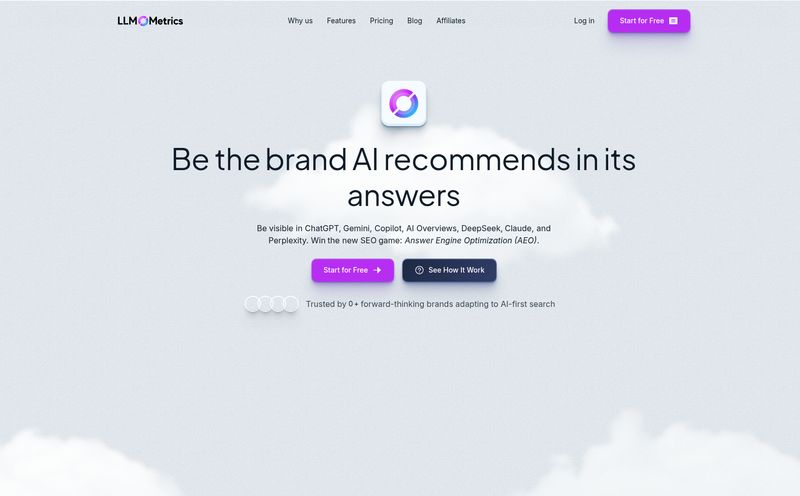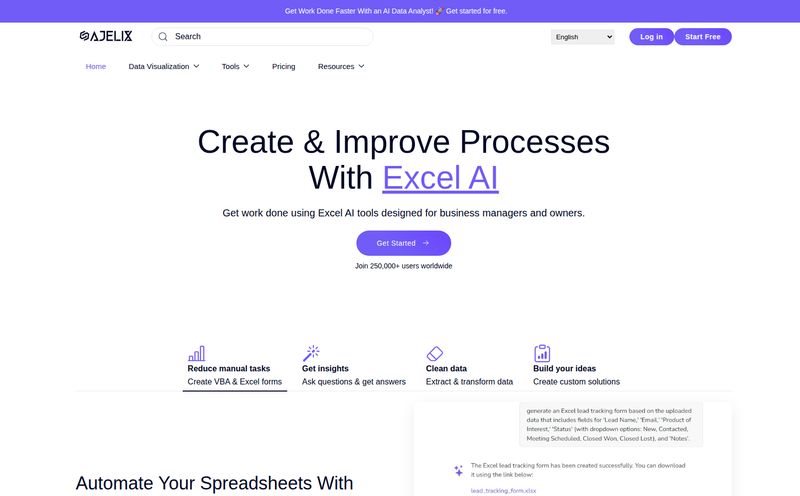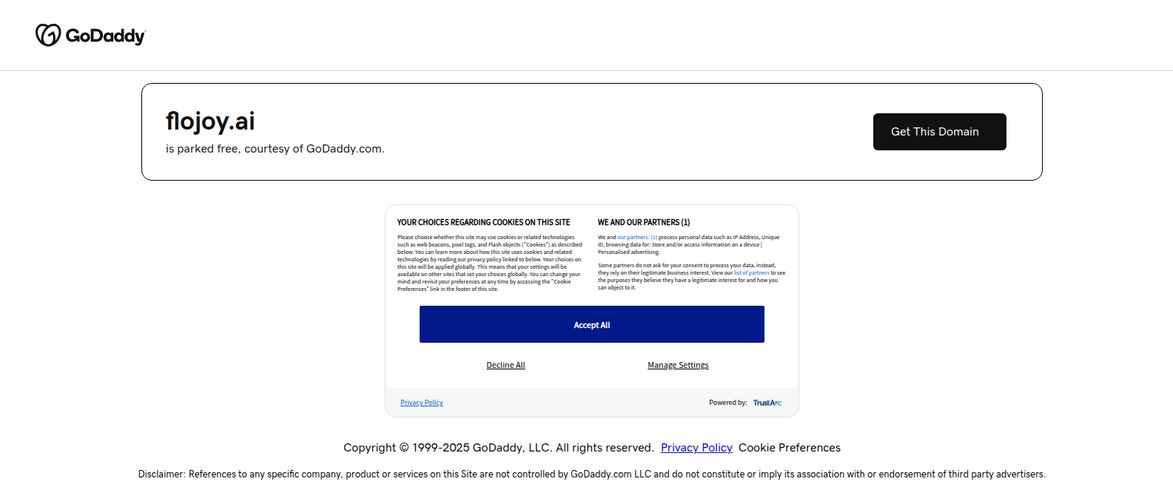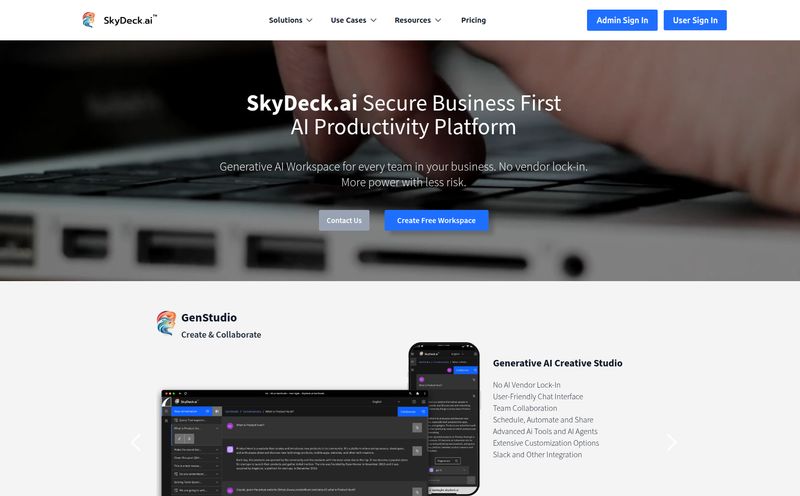Go on, guess. I’ll wait. It’s writing release notes.
Ah, yes. The digital equivalent of telling your parents what you actually did at college. You know it’s important, you know they care (kind of), but distilling weeks of complex work, bug fixes, and head-scratching breakthroughs into a neat, tidy, and—most importantly—understandable summary is a special kind of purgatory. It's the final hurdle in a sprint that everyone just wants to be over. Most of the time, it gets pushed to a junior dev or an intern, who slaps some JIRA ticket titles into an email and calls it a day. We've all seen it.
So, when a new breed of AI tools started popping up promising to slay this particular dragon, my ears perked up. As someone who lives and breathes traffic, trends, and user engagement, I know that good communication is gold. And release notes, when done right, aren't just a changelog; they're a marketing channel. They tell your users, “Hey, we’re still here, we’re working hard, and we’re making this thing better for you.”
One name that floated across my desk was NotelyAi. The promise was so, so sweet. And its story… well, it’s a perfect little parable for the current AI gold rush.
What Was the Big Idea Behind NotelyAi?
The concept behind NotelyAi was simple, which is usually the hallmark of a great idea. It was designed to be the ultimate bridge between the technical chaos of a development cycle and the clean, polished world of customer communication. In essence, it plugged directly into your project management software—like the ever-present JIRA or the sleek and trendy Linear—and used AI to automatically generate your release notes.
Think of it as a tireless digital translator. It would sift through all the developer-speak, the cryptic ticket names like BUG-47B-FIX-RENDER, and the hurried commit messages, and then spin them into beautiful, human-readable updates. No more manual copy-pasting. No more trying to remember what that one obscure feature toggle actually did. It was supposed to be automation at its finest, tackling a genuine, nagging pain point.
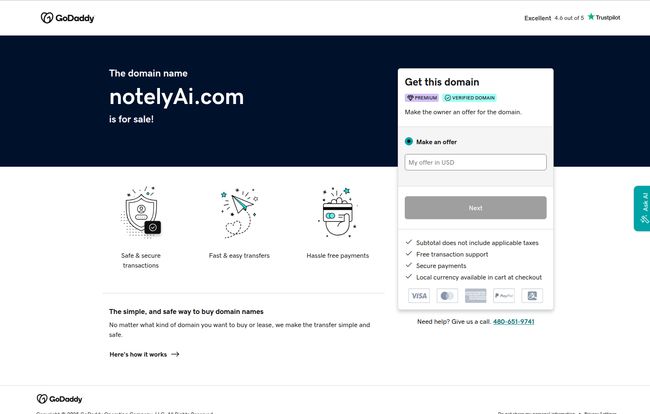
Visit NotelyAi
The Features That Made It So Darn Appealing
From what I could gather, NotelyAi wasn't just a one-trick pony. It had a few features that showed it understood the real-world workflow. The main draw was obviously the AI-generated notes, the core of the whole operation. This was the magic wand that would turn technical jargon into engaging updates for your customers.
But the supporting features were just as smart. It offered one-click sending and publishing, which is music to the ears of anyone who's ever wrestled with a clunky CMS or email marketing platform. The idea of generating, approving, and sending an update without leaving your workflow is… well, it’s the dream, isn't it? It also boasted about creating SEO-friendly release notes. Now, as an SEO professional, this made me both intrigued and a little skeptical. For a public changelog, this could mean clean code, proper heading structures, and maybe even some help with discoverability. It’s a savvy angle, I'll give them that.
This all sounded great. A tool that saves time, improves communication, and even gives you a little SEO boost? Sign me up. But with any AI tool, there’s always the dream and then there's teh reality.
The Inevitable "But" in AI Automation
Let's be real. Relying purely on AI can be a bit of a gamble. I've seen AI writers produce some truly bizarre stuff—phrases that sound like they were written by a Victorian alien. The creators of NotelyAi seemed aware of this, as one of the known drawbacks was that the generated notes might need a quick manual review. And that's fair! The goal isn't always 100% hands-off automation; sometimes it's about getting you 90% of the way there in seconds. A human touch is often needed to catch nuance, to add a bit of brand voice, or to make sure a sarcastic internal note from a developer doesn’t accidentally get published as a new “feature.”
(I once tested an AI that summarized a document about a company “launching” a new initiative and it interpreted it as the company literally being fired into space. So yeah, human oversight is probably a good thing.)
So, What Happened to NotelyAi? A Digital Ghost Story
So, with all this promise, I did what any curious SEO would do. I went to find their website, check out their pricing, and maybe see a demo. I typed `notelyai.com` into my browser, hit enter, and was greeted not by a slick SaaS landing page, but by… a GoDaddy domain parking page.
The domain is for sale.
It’s the digital equivalent of showing up to a party and finding the house empty, with a “For Sale” sign on the lawn. What happened? Did they run out of funding? Did the founders get acqui-hired by a bigger fish? Was the tech just not working as well as they'd hoped? We may never know. It’s a stark reminder of the brutal reality of the startup world, especially in the hyper-competitive AI space. For every rabbit that gets pulled out of a hat, a dozen disappear in a puff of smoke. There's no info on their pricing, because there's no them anymore, it seems.
Lessons from a Vanished Tool
The rise and apparent fall of NotelyAi isn’t just a sad story; it’s a lesson. The idea itself is absolutely golden. The problem it set out to solve is massive and universal for software companies. And even if this specific tool vanished, the need it identified hasn’t gone anywhere. This tale teaches us a few things:
- The Problem is Still There: Don’t stop looking for a solution to your release note headaches just because one option disappeared. The demand for this type of tool is huge, which means other, more stable solutions exist.
- Vet the Provider: When adopting a new AI tool into your core workflow, especially a young startup, do a little digging. Is the company active on social media? Is there a community? Is there evidence of life and ongoing development?
- Ideas are a Dime a Dozen, Execution is Everything: NotelyAi had a fantastic idea. But a great idea isn’t enough to build a sustainable business.
Who Is Still Carrying the Release Notes Torch?
Fortunately for all of us, the dream is still alive. If you’re now sitting here thinking, “Great, you got my hopes up and now I’m back to manually writing changelogs,” don’t worry. Several other platforms are doing great work in this space. Some might require a bit more manual work than NotelyAi promised, but they are established and well-supported. You might want to check out platforms like AnnounceKit, ReleaseNotes.io, or Headway. They all offer robust ways to keep your users in the loop without the existential dread of starting from a blank page.
Frequently Asked Questions
- What was NotelyAi supposed to do?
- NotelyAi was an AI-powered tool designed to automatically generate customer-facing release notes by integrating with project management tools like JIRA and Linear, saving teams time and effort.
- Is NotelyAi still available?
- It appears not. As of late 2024/early 2025, the tool's domain name (notelyai.com) is listed for sale on GoDaddy, which strongly suggests the service is no longer operational.
- Are AI-generated release notes a good idea?
- They can be a fantastic starting point! AI is great for summarizing technical changes and saving time. However, it's always a good practice to have a human review and edit the output to add brand voice, ensure accuracy, and catch any potential weirdness.
- What are some alternatives to NotelyAi?
- Yes, there are several great, established platforms for managing release notes and changelogs. Some popular options include AnnounceKit, ReleaseNotes.io, and Headway.
- Why are release notes important for SEO?
- While not a direct ranking powerhouse, a public, well-maintained changelog or release notes page can contribute to SEO. It adds fresh, relevant content to your site, can rank for long-tail keywords related to feature updates, and shows search engines (and users!) that your site is active and consistently updated.
- How did NotelyAi plan to work with JIRA?
- The plan was for NotelyAi to directly connect to a company's JIRA instance. The AI would then read the data from completed tickets—like titles, descriptions, and comments—to understand what changes were made in a development cycle and then summarize them automatically.
A Final Note on Telling Your Story
The story of NotelyAi is a fascinating little snapshot of our current moment in tech. It’s a world full of brilliant ideas and explosive innovation, but also one of high risk and frequent churn. While this particular tool may have become a digital ghost, it shined a light on a problem that needed solving.
Don't let the hassle stop you from communicating with your users. Whether you use a fancy AI tool or just a simple, well-written email, your release notes are part of your product’s story. They show you’re listening, you’re building, and you’re moving forward. And that’s a story always worth telling.
Reference and Sources
- Atlassian JIRA - Project tracking software for agile teams.
- Linear - A modern project management tool popular with startups.
- Information on NotelyAi was aggregated from publicly available data and discovery tools prior to its domain becoming inactive.
